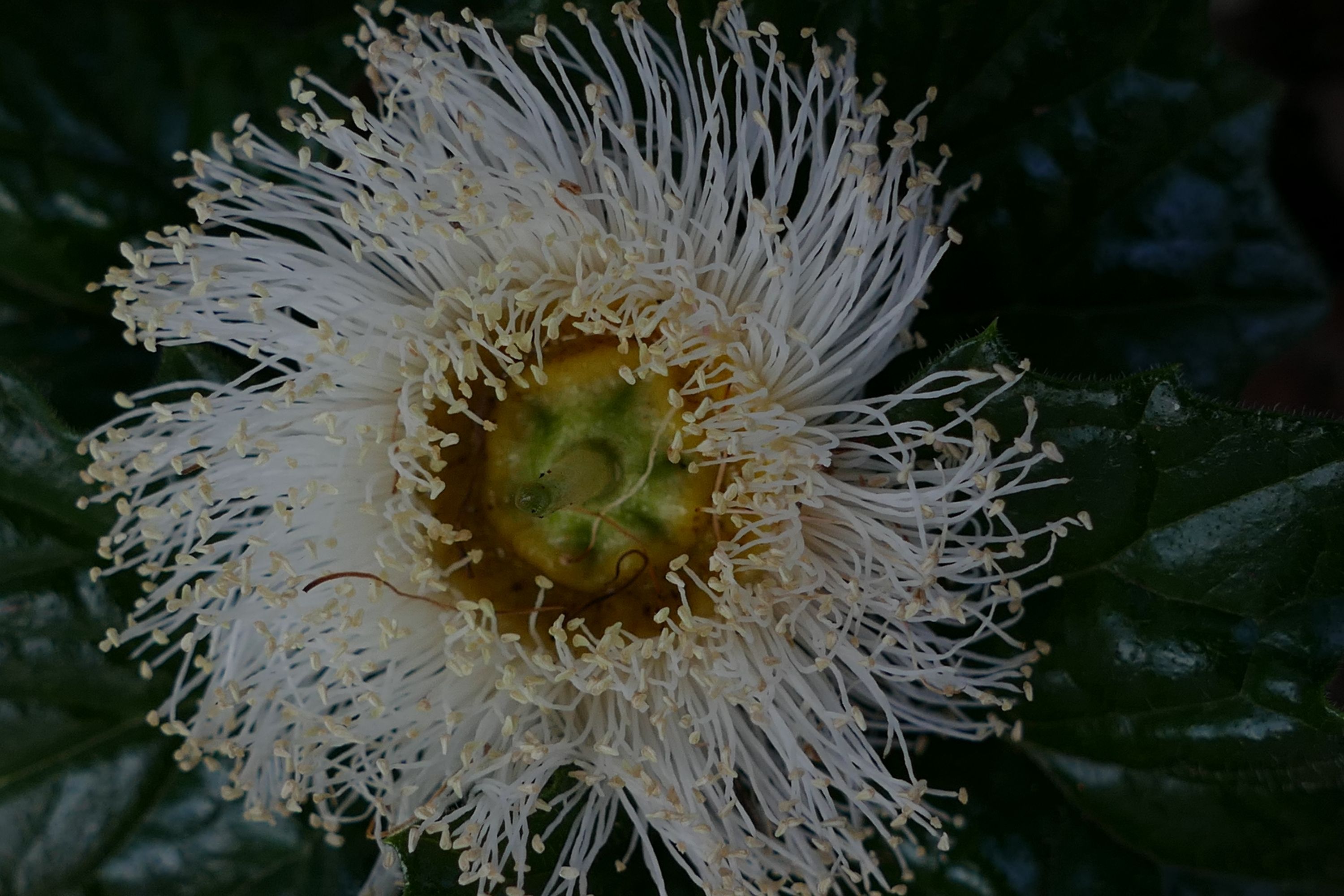Eucalyptus angustissima
(Eucalyptus angustissima)

Description
Eucalyptus angustissima, or narrow-leaved mallee, is a small tree that is native to the south of Western Australia. Distribution is scattered in southern coastal and subcoastal areas. The tree is endemic to Western Australia. It is a mallee eucalyptus that grows from about 1 to 4 metres in height. The bark is smooth or matt, mottled grey and very white/grey or light grey-brown. Its juvenile leaves are 4.5 to 8 cm long and 0.3 to 0.4 cm wide The adult leaves are 7 to 11.5 cm long and very narrow (0.15 to 0.3 cm wide). The buds occur in clusters of up to 7 and are followed by creamy-white flowers that appear between August and January and hemispherical fruits 0.5 to 0.8 cm wide. The crown is often very dense and not immediately recognisable as a eucalypt. First described by the botanist Ferdinand von Mueller in his series of papers Fragmenta phytographiae Australiae in 1863 from samples collected by George Maxwell near Point Maxwell. E. angustissima subsp. quaerenda was described in the journal Telopea in 1992 by L.A.S.Johnson and K.D.Hill from samples collected by Johnson and Maxwell from near Lake Chinocup. Eucalyptusis a genus of over seven hundred species of flowering trees, shrubs or mallees in the myrtle family, Myrtaceae. Along with several other genera in the tribe Eucalypteae, including Corymbia, they are commonly known as eucalypts. Plants in the genus Eucalyptus have bark that is either smooth, fibrous, hard or stringy, leaves with oil glands, and sepals and petals that are fused to form a "cap" or operculum over the stamens. The fruit is a woody capsule commonly referred to as a "gumnut". Most species of Eucalyptus are native to Australia, and every state and territory has representative species. About three-quarters of Australian forests are eucalypt forests. Wildfire is a feature of the Australian landscape and many eucalypt species are adapted to fire, and resprout after fire or have seeds which survive fire. A few species are native to islands north of Australia and a smaller number are only found outside the continent. Eucalypts have been grown in plantations in many other countries because they are fast growing and have valuable timber, or can be used for pulpwood, for honey production or essential oils. In some countries, however, they have been removed because they are highly flammable.
Taxonomic tree:







